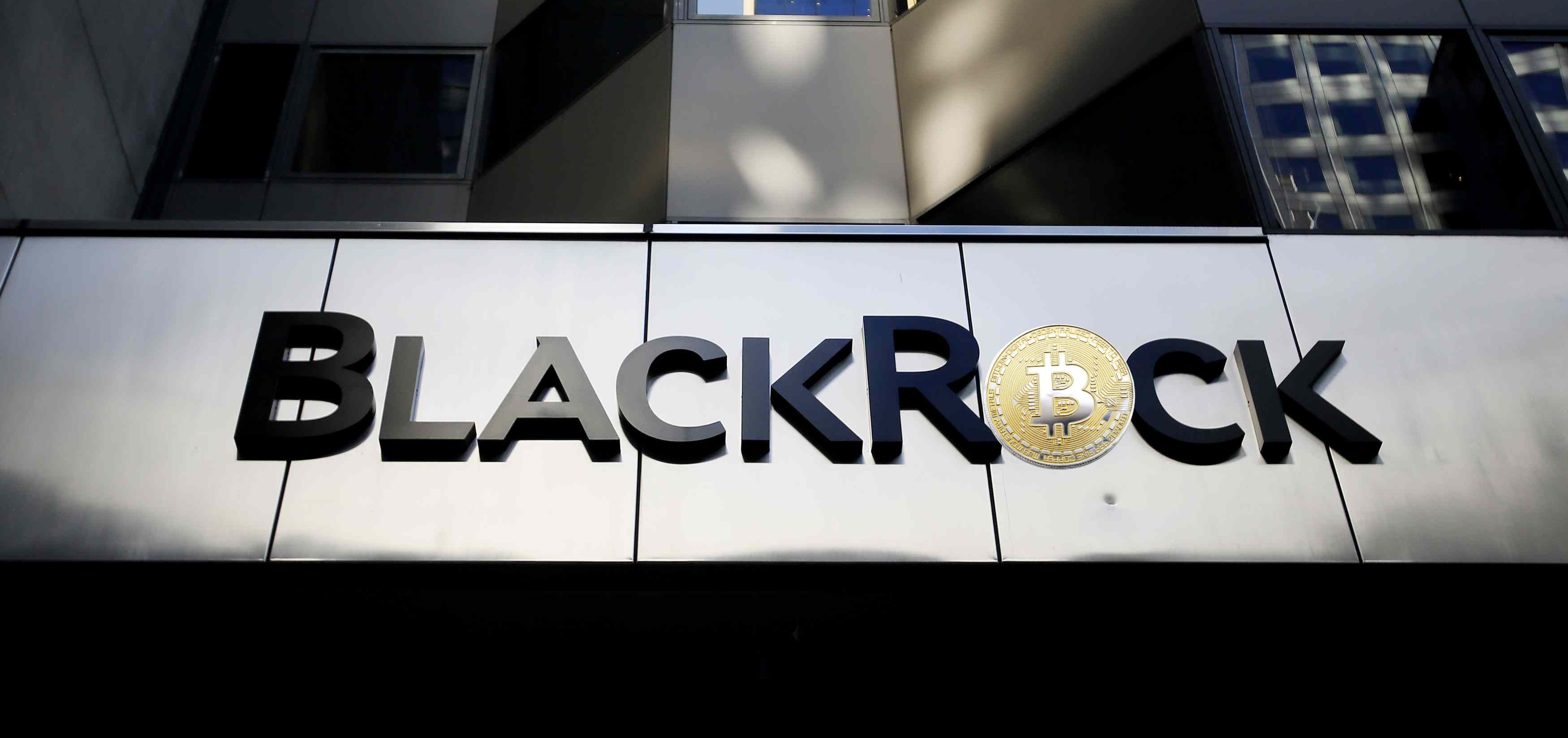
Bitcoin Hits 13-Month High Due BlackRock's ETF and ADP Report
Bitcoin's Price Rally correlates With the Release of the ADP Job's Report and BlackRock's Bitcoin ETF annoucment| That's TradingNEWS
The labor market in the U.S. has received a positive signal, with private payrolls for June exceeding expectations. The ADP National Employment report revealed a significant increase of 497,000 jobs in the private sector, beating economists’ forecasts of a 228,000 rise. However, May’s figures underwent revision, showing 267,000 jobs added rather than the initially reported 278,000. This recent data suggests strength in the labor market, despite the rising concerns of a potential recession due to increased interest rates, according to Reuters.
In the wake of the ADP report, a downturn in the crypto market was observed. Major cryptocurrencies such as Bitcoin (BTC) and Ethereum (ETH) recorded declines. Specifically, BTC fell by 1.21% to reach a price of $30,544.90, while ETH saw a drop of 1.17%, trading at $1,902.00. The market's reaction reflects the implications of the report's findings. Higher-than-expected U.S. job data may suggest an impending increase in interest rates by the U.S. Federal Reserve.
Last BlackRocks's Move..
Notwithstanding the slight downturn, Bitcoin managed to reach a significant milestone recently by achieving a new all-time high for this year, at $31,141.54. The possibility of the Fed extending its rate hike campaign is suggested by the two-year note, more sensitive to short-term interest rate expectations, reaching fresh multi-year highs. Fed funds futures traders now see a 94% likelihood of a 25 basis point rate hike this month. Markets are also factoring in a 75% chance of three additional rate hikes before the year's end. Since initiating its tightening cycle in March 2022, the Fed has raised rates by 500 basis points, pushing them into the 5%-5.25% range. This stricter monetary policy has significantly influenced the downturn in crypto markets over the past 18 months.
Despite the market's recent dip, the price of Bitcoin has increased marginally, sitting above $30,800, closing in on April's high near $31,500—Bitcoin's highest point since June 2022. The push above the crucial $30,000 mark last month followed the filing of applications by BlackRock and others for spot Bitcoin exchange-traded funds (ETFs), fueling hopes of renewed retail and institutional interest in crypto. The status of these applications remains uncertain, but traders' sentiment continues to be bullish.
According to Vineeth Bhuvanagiri, the Managing Director of Emurgo—Cardano blockchain's commercial arm—Bitcoin appears to be consolidating around the $30,000 mark, propelled by these spot Bitcoin applications. BlackRock and Fidelity's applications are viewed as validation for Bitcoin and the wider digital asset industry. However, Bhuvanagiri doubts that we have entered the bull-market territory for the broader digital asset industry yet.
Looking ahead, the U.S. jobs report could be a key catalyst to propel Bitcoin higher or lower, as it would with the Dow Jones Industrial Average and the S&P 500. The report is among the last significant economic data releases preceding the Federal Reserve's next decision on interest rates later this month. The Fed's series of inflation-fighting interest-rate hikes posed a significant headwind for risk-sensitive assets in 2022. However, the optimism that inflation is cooling off and the central bank may become more accommodating has helped drive Bitcoin higher in 2023.
Minutes released recently from the Fed’s last policy-setting committee show near-unanimous support for holding rates steady in June, but the prospect of another hike this month is a possibility. The jobs report, an important gauge of the U.S. economy's performance, could help solidify bets on the near-term outlook for rates and, in turn, influence thecryptocurrency and stock markets.
Ether, the second-largest crypto, experienced a less than 1% decline, trading at $1,925. Smaller cryptocurrencies, or altcoins, such as Cardano and Polygon, were weaker, each declining by 2%. Memecoins, like Dogecoin and Shiba Inu, also dropped by 1%. These movements occurred concurrently with the release of the ADP report, developed in collaboration with the Stanford Digital Economy Lab. This report offers an early look into the labor market ahead of the more detailed employment report from the Bureau of Labor Statistics, set for release on Friday.
The U.S. Dollar Index also experienced a 0.3% increase immediately after the release of the ADP report, recovering a significant portion of its earlier losses.
In the midst of these economic developments, Bitcoin reached its highest level in 13 months, rising by as much as 3.28% to $31,500. The world's leading cryptocurrency recently found support following plans by fund managers, including BlackRock - the world's largest asset manager - to launch a U.S.-listed spot bitcoin exchange-traded fund (ETF). After initial concerns by the U.S. securities regulator, Nasdaq refiled its application to list BlackRock's ETF, according to a public filing made on Monday.
Crypto service provider Matrixport, one of the few firms to turn bullish on Bitcoin late last year, expects the leading cryptocurrency to surge to as high as $125,000 by the end of 2024. This prediction relies on data suggesting a multimonth bull market with a significant surge in market value following the confirmation of the end of a bear market. This pattern is seen once prices set a 12-month high for the first time in at least a year. This signal was triggered late last month when prices topped $31,000, the highest since June 2022.
Markus Thielen, Head of Research and Strategy at Matrixport, stated, "On June 22, 2023, Bitcoin made a new one-year high, marking the first time in a year. This signal has historically indicated the end of bear markets and the start of new crypto bull markets." Thielen predicts a 123% increase over twelve months and a 310% rise over eighteen months based on the average return of similar signals triggered in 2015, 2019, and 2020. This prediction would take prices to $65,539 in twelve months and $125,731 over eighteen months.
The present scenario aligns with Bitcoin's trend of sharp uptrends in the 12-18 months following the halving of the mining reward. The fourth such halving, which will reduce the new coins paid per block to 3.25 BTC from 6.5 BTC, is expected to occur in March/April next year.
On July 6, Bitcoin reached a 13-month trading high of $31,500, with a 3.28% rise, according to Reuters. CoinMarketCap, a crypto trading exchange, reported a 2.2% increase in Bitcoin's market capitalization, at $610,122,773,744. As of July 7, 2022, Bitcoin was traded at $20,547.81.
The total crypto market volume over the last 24 hours was $37.18 billion, marking a 19.24% increase. The total volume in Decentralized Finance (DeFi) was $2.53 billion, 6.81% of the total crypto market 24-hour volume. The volume of all stable coins now stands at $34.16 billion, which accounts for 91.89% of the total crypto market 24-hour volume. These figures reflect the dynamic and rapidlychanging nature of the crypto market, influenced not only by trader sentiments but also by broader economic factors and regulatory developments.
Interestingly, Bitcoin’s recent rally to surpass the key $30,000 mark can be attributed to numerous factors. One significant catalyst has been the filing of applications by investment giants like BlackRock and others for spot Bitcoin exchange-traded funds (ETFs). These filings, although still under review, have invigorated hopes of renewed retail and institutional interest in the cryptocurrency.
While the crypto market has faced a series of headwinds over the past year, industry insiders and analysts remain optimistic about Bitcoin’s potential, particularly as it begins to gain mainstream acceptance. Vineeth Bhuvanagiri, managing director of Emurgo, the commercial arm of the Cardano blockchain, observed that "These applications by BlackRock and Fidelity, among others, are certainly seen as validation for Bitcoin and the broader digital asset industry."
Despite this, Bhuvanagiri believes the broader digital asset industry has yet to enter bull-market territory, although Bitcoin seems to be consolidating at around the $30,000 mark. This current state of the market could be attributed to the perceived validation from financial institutions and fund managers showing a keen interest in digital assets.
Notably, the release of key economic data, like the jobs report, can influence the direction of both the crypto and traditional markets. For instance, the jobs report can sway the Dow Jones Industrial Average and S&P 500, just as it would Bitcoin. This highlights the growing interconnectedness of the financial markets, as digital and traditional finance become increasingly intertwined.
The Fed’s monetary policies have had significant impacts on risk-sensitive assets in the past. However, a sentiment of optimism is being felt in the financial markets as traders anticipate inflation cooling off and the central bank adopting a more accommodative stance. This optimism, along with other factors, has contributed to the recent resurgence in Bitcoin’s price.
A more decisive outlook on the near-term trajectory of the Fed's interest rates will be influenced by the jobs report, which is a crucial indicator of the U.S. economy's health. Consequently, the release of this report can significantly impact both the crypto and stock markets, setting the stage for possible price fluctuations in either direction.
In conclusion, while the global economy continues to recover and adapt in the face of changes and challenges, the impact of economic data and policy decisions on the cryptocurrency market is becoming increasingly pronounced. Traders and investors should remain vigilant and informed as these complex dynamics continue to unfold.
Read More
-
GPIQ ETF Rises on 10% Yield and AI Boom as Investors Brace for Tech Volatility
14.10.2025 · TradingNEWS ArchiveStocks
-
Ripple (XRP-USD) Stabilizes at $2.51 as Whales Buy $5.5B and ETF Outflows Shake Crypto
14.10.2025 · TradingNEWS ArchiveCrypto
-
Natural Gas Price Forecast - NG=F Falls to $3.07 as Supply Glut and Weak Heating Outlook Hit Demand
14.10.2025 · TradingNEWS ArchiveCommodities
-
USD/JPY Price Forecast - Dollar to Yen Slides to 151.80 as Trade Tensions Boost Yen Strength
14.10.2025 · TradingNEWS ArchiveForex

















